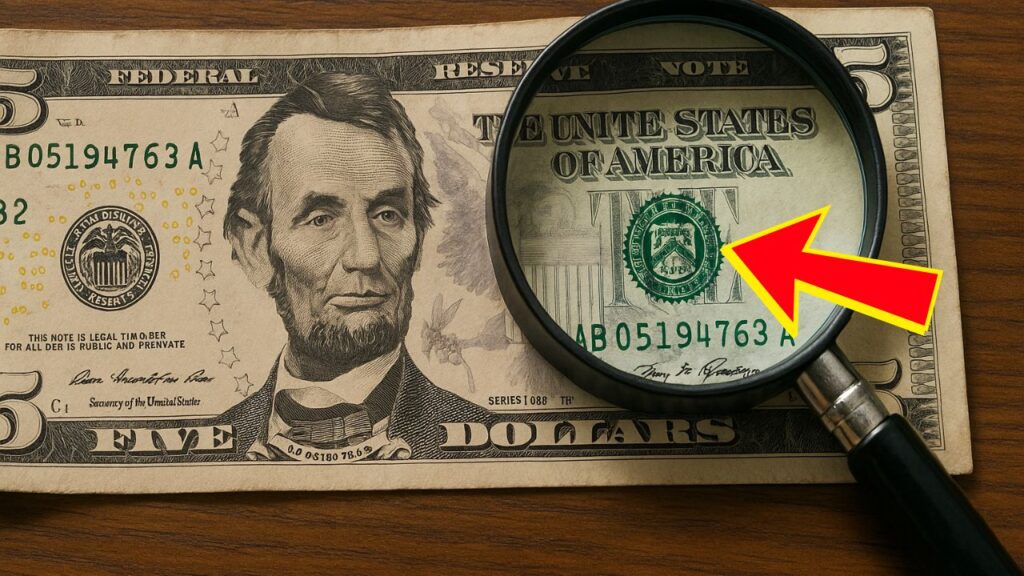In the world of currency collecting, errors and misprints can turn an ordinary bill into a valuable treasure. Among the various anomalies, a 1995 $5 bill with an upside-down seal stands out as a rare and intriguing find. This article delves into the details of this particular error, providing collectors with the knowledge to identify and assess its value.
Understanding the 1995 $5 Bill
The 1995 $5 Federal Reserve Note was part of a series featuring President Abraham Lincoln’s portrait on the obverse and the Lincoln Memorial on the reverse. Printed in green ink, the bill includes several security features such as a security thread, microprinting, and a watermark.
What Is an Upside-Down Seal?
An upside-down seal error occurs when the U.S. Treasury seal is printed in the wrong orientation, appearing upside down relative to the rest of the bill’s design. This misalignment is a result of a printing error during the production process.
Key Features of the 1995 $5 Bill with Upside-Down Seal
| Feature | Description |
|---|---|
| Series | 1995 Federal Reserve Note |
| Obverse Design | Portrait of President Abraham Lincoln |
| Reverse Design | Lincoln Memorial |
| Seal Location | Left side of the bill |
| Error Type | Upside-down U.S. Treasury seal |
| Rarity | Rare |
| Value Factors | Condition, serial numbers, certification |
| Authentication | Professional grading services (e.g., PCGS, PMG) |
| Preservation Tips | Protective storage, cool/dry environment, minimal handling |
Identifying the Error
To spot a 1995 $5 bill with an upside-down seal:
- Examine the Treasury Seal: Locate the green U.S. Treasury seal on the left side of the bill.
- Check the Orientation: The seal should be upright. If it appears inverted, the bill may be an error note.
- Inspect Other Features: Ensure that other elements, such as the serial numbers and the Federal Reserve seal, are correctly aligned.
Rarity and Value
Bills with upside-down seals are considered rare due to the nature of the printing process, which typically catches such errors before the bills are released into circulation. As a result, a 1995 $5 bill with this error can be highly sought after by collectors.
Factors Influencing Value
Several factors can affect the value of a 1995 $5 bill with an upside-down seal:
- Condition: Bills in uncirculated condition are more valuable.
- Serial Numbers: Unique or low serial numbers can increase desirability.
- Certification: Having the bill graded by a professional organization like PCGS or PMG can authenticate its value.
Market Trends
While specific sales data for 1995 $5 bills with upside-down seals is limited, similar error notes have fetched significant amounts. For instance, error notes from other denominations and years have sold for hundreds to thousands of dollars, depending on their rarity and condition.
How to Authenticate
To authenticate a 1995 $5 bill with an upside-down seal:
- Professional Grading: Submit the bill to a reputable grading service for evaluation.
- Consult Experts: Engage with currency dealers or collectors who specialize in error notes.
- Research: Utilize resources like the Bureau of Engraving and Printing’s website or numismatic forums for information.
Preservation Tips
To maintain the condition and value of your error note:
- Storage: Keep the bill in a protective sleeve or holder to prevent physical damage.
- Environment: Store in a cool, dry place away from direct sunlight.
- Handling: Minimize handling to avoid wear and tear.
A 1995 $5 bill with an upside-down seal is a rare and valuable find for currency collectors. By understanding how to identify, authenticate, and preserve such an error note, collectors can appreciate its uniqueness and potential worth. Always remember to consult with professionals and do thorough research to ensure the authenticity and value of your collectible currency.
FAQs
How can I tell if my 1995 $5 bill has an upside-down seal?
Examine the U.S. Treasury seal on the left side of the bill. If the seal appears inverted compared to the rest of the bill’s design, it may be an error note.
Are 1995 $5 bills with upside-down seals common?
No, they are considered rare due to the nature of the printing process, which typically catches such errors before the bills are released into circulation.
How can I increase the value of my error note?
Maintaining the bill in uncirculated condition, obtaining professional certification, and ensuring it has unique or low serial numbers can enhance its value.
